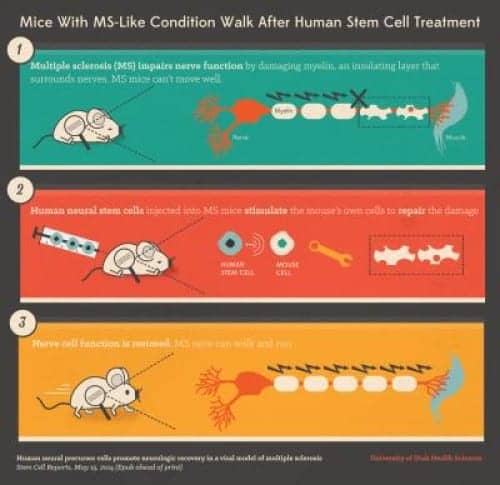A new study published online in the journal Stem Cell Reports shows that mice disabled by a multiple sclerosis (MS)-like condition were able to walk less than 2 weeks after a human stem cell treatment, and the results may lead to new methods for treating the condition. Scientists transplanted human stem cells into mice with MS, and within 10 to 14 days, the mice regained motor skills and showed no signs of slowing down 6 months later. Jeanne Loring, PhD, co-senior author, says, “This result opens up a whole new area of research for us.”
According to a University of Utah Health Sciences news release, the mice with MS treated with human stem cells experienced a reversal of symptoms. Immune attacks are blunted and damaged myelin is repaired, explaining their dramatic recovery. The discovery could help patients with latter, or progressive, stages of the disease, for whom no treatments may be available.
The research team also found no signs of the cells after 1 week. In that window, they send chemical signals that instruct the mouse’s own cells to repair the damage caused by MS. This realization could be important for therapy development, as indicated on the University of Utah news release.
Co-senior author Tom Lane, PhD, explains, “Rather than having to engraft stem cells into a patient, which can be challenging, we might be able to put those chemical signals into a drug that can be used to deliver the therapy much more easily.” With clinical trials being the long-term goal, the next steps for the researchers are to assess durability and safety of the stem cell therapy in mice.
Lane says, “I would love to see something that could promote repair and ease the burden that patients with MS have.”
Photo Appears Courtesy of University of Utah Health Sciences Office of Public Affairs
[Source: University of Utah Health Sciences]





